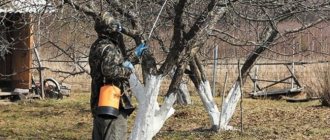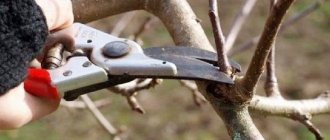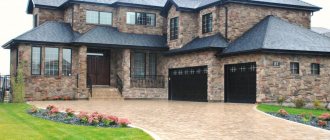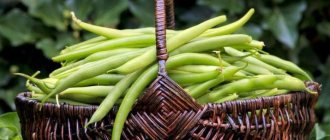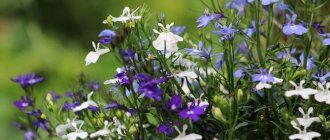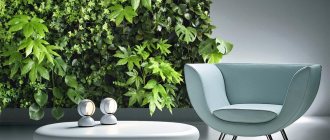Video: site planning
Having received a plot and planning your future garden, think about its purpose and your own inclinations. Do you like to dig in the garden, work on the land, or do you prefer walks around the neighborhood, barbecues, and active games in the fresh air? After all, the principle of site planning, its division into special zones and their ratio in size depends on this. The garden should be a comfortable and pleasant place for the whole family to relax and work. And here you need to follow certain rules.
Garden layout
Once the site for the garden has been selected, it is necessary to correctly orient it to the cardinal points and zone it. This is important to do to create optimal conditions for the growth and fruiting of trees and shrubs. With proper placement of plants on the site, you can provide them with sunlight or shade, protect them from wind and drying out of the soil. In addition, a thoughtful arrangement of plants relative to the entrance to the garden, outbuildings adjacent to its territory, and the source of water supply makes the gardener’s work easier.
The garden layout can be regular (geometric) or landscape. The regular layout is characterized by symmetry and the arrangement of plants along geometric lines. All trees and shrubs must be placed at a certain distance from each other according to a pattern in the form of a square, rectangle, or diamond. Smooth paths are laid between them. A checkerboard planting pattern is often used.
Square, rectangular and checkerboard planting patterns are suitable for regularly shaped areas. The row spacing in such a garden can be compacted by planting with other plants that do not require a lot of light. If the area is narrow and long, then it is better to arrange trees and shrubs in a rectangular pattern. It is optimal for a small garden. When compacted planting, trees are placed in rows every 8 m. A distance of 5-6 m is left between trees. Trees with a smaller crown (plum, cherry) can be planted between trees with a large crown. Berry bushes (gooseberries, currants) are placed between the rows. The distance from one bush to another is 1.25-1.5 m. Densification of plantings with a rectangular arrangement of fruit trees is justified. Large trees (apple trees, pears) grow slowly in the first years and gradually occupy the space allocated for them. Smaller and more durable ones will have time to produce more than one harvest during this time. Aging in plums and cherries is observed in the 20-25th year, and in berry bushes - from the 14-16th year of life. When the apple and pear trees grow, the plum and cherry trees no longer bear fruit at full capacity and are uprooted. Placing fruit trees in a square pattern is most often used on flat areas. With this approach, the distance between trees is the same on all sides. The checkerboard layout of fruit trees is most often used in summer cottages. Trees are placed at the corners of the triangle at equal distances from each other (Fig. 1). This approach allows you to plant 14% more fruit trees than with conventional planting. The checkerboard planting pattern is suitable for terrace gardens.
Rice. 1. Checkerboard pattern of tree planting: 1 - tall trees: 2 - medium and short trees
It is important to correctly arrange fruit trees and shrubs in height in the garden (Fig. 2).
Rice. 2. Types of trees by height: 1- dwarf; 2 - medium height; 3 - tall
Back
Distance between seedlings
If you plan to grow apple trees on tall rootstocks in the garden, then leave a distance of 6-8 m between the rows, and 4-6 m between the trees in them. Apple trees on semi-dwarf rootstocks take up less space. Their rows are made with a distance of 5-7 m, and 3-4 m are left between plants. Rows for apple trees on dwarf rootstocks are placed at a distance of 4-5 m from each other. The distance between trees is 1.5-2 m. Rows of pears on vigorous rootstocks are spaced 6-8 m apart. The distance between trees in a row is 4-5 m.
Cherries and plums are planted in rows with an interval of 4 m, 3 m are left between trees. The same trees of small-sized varieties are placed every 2 m in rows with an interval of 4-5 m. Chokeberries, currants, gooseberries are planted at a distance of 1-1.5 m from each other, the rows are made 2-2.5 m wide.
Gooseberry bushes can grow up to 2.5 m in diameter. When planted in rows, bushes usually do not exceed 2 m in diameter. Gooseberries can be planted between pome fruit trees, leaving a distance of 1.5-2 m to them. As soon as the tree crowns grow so large that they close together, the gooseberries are uprooted.
Gooseberries are planted in large quantities in sparse rows. The bushes are placed at a distance of 1.4-1.5 m from each other, and 2-2.5 m are left between the rows. After 5-6 years, the gooseberry bushes grow and the rows become continuous.
To quickly obtain a large harvest, sometimes 2 bushes are planted in one planting hole with a distance of 20 cm. During the first 3 years, gooseberries really produce a bountiful harvest. Subsequently, the bushes grow greatly, oppress each other and quickly age. It is already difficult to plant them, since the roots will have to be seriously damaged. Therefore, planting two bushes is impractical. A combined planting scheme is more rational. Plants are planted often - every 0.75 m in a row, and only 1 m is kept between the rows. After 3-4 years, the bushes are thinned out one at a time and 1.5 m remain between them in the rows. Bushes uprooted in the fall are planted in a new place. After 1-2 years, the gooseberries are thinned out in a similar way again. This approach to cultivation allows you to get a decent harvest every year, even from young plants in a small area. Blackberries and raspberries take up less space. Their rows are made 2 m wide, and the bushes are spaced at intervals of 0.6-0.7 m.
The effective life expectancy for horticulture and the planting scheme for fruit and berry crops in central Russia are presented in Table 1.
Table 1. Service life and planting scheme for fruit and berry crops
In a landscape-style garden, plants are placed randomly, adhering to the basic principles, to provide them with optimal conditions for growth and fruiting. In such a garden, everything looks natural; there are more ornamental plants.
It is recommended to place fruit trees on the site on the north, north-west or north-east side. In this case, the garden will not shade the vegetable garden located on the south side.
IN A LANDSCAPE GARDEN, FRUIT TREES ARE MORE OFTEN PLANTED IN ROWS along parallel arched lines. Shrubs and flower beds are placed in such a way as to highlight the beauty of the garden.
Windproof plants can be planted on the northern and eastern sides. They will protect more heat-loving fruit trees from strong winds. You can also place outbuildings or a residential building there. However, they should not be tall and shade the garden. One of the options for placing a garden, vegetable garden, house and outbuildings is presented in Figure 3.
Rice. 3. Layout of the site (N - north, S - south, unit of measurement - m): 1 - house, 2 - playground, 3 - toilet, 4 - shower, 5 - lawn, 6 - water tank, 7 - strawberries , 8 - vegetables, 9 - cherries, 10 - cherries, 11 - pears, 12 - medium-sized apple trees, 13 - grapes, 14 - gooseberries, 15 - currants, 16 - raspberries, 17 - apricots, 18 - sea buckthorn, 19 - plums , 20 - walnut, 21 - low-growing apple trees, 22 - lilac
When planning a garden, the characteristics of fruit and berry plants are taken into account - the need for light or shade, heat-loving behavior, resistance to drought, etc. The tallest trees (apple trees, pears) are usually planted on the north side. In the southern direction, lower-growing ones (plum, cherry) are placed, and then berry bushes (raspberries, currants, gooseberries). Next, place a vegetable garden and low-growing berry plants (garden strawberries). With this approach, all plants receive enough sunlight (Fig. 4). The walnut is placed away from all fruit trees and shrubs. The best place for it is near the house.
Rice. 4. Illumination of trees and shrubs in the garden: 1 - with the correct arrangement of plants in height; 2 - if the plants are incorrectly positioned in height
It is rational to place the grapes along the fence on the south or south-east side of the site. Berry bushes can be separated into a separate zone or planted between rows of fruit trees. The hardiest species of fruit trees are located on the north side. The most heat-loving trees (apricots, cherries) are planted in the center of the garden, in a well-lit place protected from the wind. You can plant them along the fence, on the side of the forest, against the wall of the house.
Trees should not create extensive shade in neighboring areas. Therefore, tall varieties are planted at a distance of 3.4-4 m from the border with the adjacent plot, medium-sized ones - at a distance of 2-2.5 m. Lower-growing plants are planted near the house so that they do not shade the windows. The free space between the fence and trees can be filled with currants, raspberries, and gooseberries. They can grow well in the shade. However, 1 m should be left from them to the fence. It is not recommended to plant any trees and shrubs at a distance of 20 cm from the border with the adjacent area.
When planting shrubs, it is necessary to take into account that they grow strongly and can interfere with the growth of other plants, so young shoots must be cut down. For the same reasons, it is better to plant raspberries, sea buckthorn, and currants away from other plants, in more remote corners of the garden. It is recommended to plant lemongrass and actinidia close to home. With this arrangement they will be protected from the wind. Creeping apple trees are planted only in areas covered with snow in winter. Without snow cover, they will freeze, so they should not be placed in a windy place.
Plum, on the contrary, is planted where there is no large accumulation of snow. In high snowdrifts, its bark begins to rot in the area of the root collar, which can lead to the death of the entire tree. Usually an elevated place is allocated for the cherry tree. In order for plums and cherries to be well pollinated and bear fruit, it is recommended to plant 2-3 of them of different varieties. Currants, sea buckthorn, and chokeberry are planted in the sunniest place.
Black currant prefers moist soil (loam) and sunny, wind-protected places, but can also grow in light shade. With strong shading, this shrub begins to bear less fruit. Soil with pronounced acidity for growing black currants is limed.
Red and white currants grow on light soils and do not tolerate shade. They are planted only in an open place with moderate humidity. These types of currants do not tolerate low-lying areas and dry soil. Loose soil of any type with moderate moisture is suitable for gooseberries. It bears fruit well even on moderately acidic soils. With a high groundwater level and stagnant water, the plant is affected by lichens and powdery mildew. The place for this berry bush is chosen to be sunny.
Strawberries require not only an area with maximum sunlight, but also one protected from the wind in winter. Strawberries grow well in one place for 3-4 years, after which they become smaller, often get sick and are affected by pests. Therefore, it is recommended to transplant it to another place.
The more different species and varieties of fruit trees and shrubs in the garden, the greater the chance of getting a good harvest every year. If weather conditions are less favorable for one crop, they may be more favorable for another crop or variety. However, it is not recommended to plant apple and pear trees of summer and winter varieties next to each other. It is better to select them according to similar ripening groups, for example, summer and ripening in early autumn, winter and ripening in late autumn. You should also not place plants too close to each other. In this case, after a few years they will begin to be mutually oppressed and this will not have the best effect on fruiting. In order to plan a standard plot for a garden, we suggest using the data in Table 2.
Table 2. Norms of planting area for fruit and berry crops per family of four people
In total, 400 m2 is allocated for the garden on the site. This is quite enough for a family of 3-4 people. In the garden they plant 4 apple trees, 3-4 plums and cherries, 2-3 pears, 1-2 apricots and cherries are enough. Of the shrubs, black currant is the most planted - 5-7 bushes. You can plant 2 bushes of red currants, gooseberries, and sea buckthorn. There is room for 100-150 strawberry bushes. If desired, you can allocate space for grapes, chokeberry, serviceberry, and rose hips. In order to ensure that fresh fruits and berries are available for as long a period as possible, trees and shrubs from different groups according to ripening periods should be planted.
IN DAMP AREAS WITH HIGH GROUNDWATER STATIONS, it is recommended to plant fruit trees and shrubs on earth mounds. They are created by digging up soil, which is thrown to the middle of the selected location and mixed with manure, peat, and humus.
As trees and shrubs grow, the ratio of free space and plantings, as well as light and shadow on the site, will change. Low-growing crops may be shaded if this is not taken into account in advance. On relief terrain, rows of fruit plants move from one slope to another almost parallel to each other. At higher elevations they converge slightly, and at the foot of the hills they widen slightly (Fig. 5).
Rice. 5. Location of trees on a relief area
After determining the style of the garden and drawing up a plan, marking the site begins. To do this, use a tape measure, a cord and an ecker (a stake with a wooden cross to align the corners of rows and beds). First, zones for placing trees and shrubs along the boundaries of the site are determined. In the designated places, pegs are driven into the ground and the cord is pulled if necessary. Then they mark the line of the longest row, measure the distances between trees or bushes on it and drive pegs in their place. The placement of plants along the edges of the row is determined using an eker (Fig. 6). With proper marking, all rows of trees and shrubs in the garden are rectangular, parallel and perpendicular to each other.
Rice. 6. Eker
Back
Video: site planning
Next articles:
- Location and zoning of the vegetable garden
Landscape and regular planning
Below we give examples of garden layouts for lovers of order and clarity of forms and for those who like it when the plants in the orchard are planted according to the same pattern, but create the impression of natural areas.
Landscape planning involves the arrangement of trees and other crops in a free order, close to natural. In such a garden, in addition to fruit crops, decorative crops are also widely used.
An example of a free garden layout - vegetable beds on the left and top, fruit trees planted in groups in the center and on the right
With regular planning, trees and shrubs, as well as vegetables in the garden, are planted in strict rows at the same distance. The planting pattern also has a strict geometric shape - a square for areas whose length and width are almost equal, and a rectangle for areas whose length is much greater than the width.
An example of a regular layout of a garden with a vegetable garden - clear geometry, the area is divided into regular squares, rectangles, plants are planted in rows
Timing for planting fruit plants in the garden
Since most seedlings are currently grown using special technology in special containers, the time for planting garden trees can vary widely.
However, most gardeners traditionally believe that garden crops can only be planted in spring and autumn. During this period, plants that grow quickly in the spring are usually planted. It can be:
- currant;
- gooseberry;
- winter-hardy varieties of apple and pear trees.
Planting garden plants in the spring is more preferable in the northern and central regions, since in this case the frosty winter will not harm the young seedlings. We are talking about such fruit trees as:
- cherries;
- plum;
- apricots;
- cherry;
- non-frost-resistant apple and pear trees.
It is necessary to plant plants in the spring as early as possible so that the buds do not have time to bloom. In this case, the pits should be prepared in advance, in the fall.
Protecting the garden from spring frosts
Spring frosts are dangerous for gardens during the flowering period of trees. They destroy the flowers, and therefore the harvest. According to long-term observations, in the central zone of the USSR the latest frost occurs around June 6.
The Central Institute of Weather Forecasts warns on the radio about the approach of frost.
The simplest way to combat frosts during flowering trees is to fumigate the garden by burning heaps of manure, peat, and garbage (Fig. 21).
Rice. 21. Scheme of the smoke heap structure: a - wood chips, brushwood, straw; b - wet flammable material (manure, etc.); c - soil layer; g - stakes for regulating the combustion of the smoke heap
The heaps are lit when the temperature drops sharply to +1, +2°, and the smoking ends 1-2 hours after sunrise, but not earlier, in order to avoid rapid thawing of the frozen flowers.
Smoking conditions: the heap should smoke and not burn, which is achieved by covering the heap with a layer of earth in those places where the flame appears. If the pile fades, it is loosened with a fork and the stakes are raised. Smoke bombs are the most convenient for smoking a garden.
One of the measures to reduce the effects of frost is placing barrels of water under the trees, as well as spraying the soil under the trees and the trees themselves with water.
Covering the tree trunk circles with a layer of manure, peat, and sawdust is of great importance. This slows down the melting of snow and delays bud break. As a result, the trees “escape” from frost.
Trees whitened with lime in the fall also begin to grow somewhat later in the spring, and the flowers often do not fall under frost.
Determining the possibility of spring frosts.
One of the signs of the onset of frost is a sharp drop in temperature from 8-9 pm (the day before frost) in calm, windless weather and a cloudless night.
The onset of frost is also determined using a device consisting of two thermometers: dry and wet. The result of the readings of both thermometers is determined from the table shown in Figure 22.
Rice. 22. Auxiliary table for determining the possibility of frost
The readings of a dry thermometer (in degrees) are indicated in the table in the left vertical column, and wet thermometer readings in the upper horizontal column. The intersection of the temperature readings of both thermometers determines the possibility of freezing.
The main reasons for maintaining a distance between plantings
The garden is always laid out according to plan. The gardener takes into account the demands of crops on growing conditions and the dimensions of the crown in adulthood. The plan addresses four issues:
- Compliance with laws. There are established standards for the placement of trees and shrubs on the site. They regulate the observance of minimum distances to neighboring plots, cesspools, utility networks, and other important facilities.
- Adjustment to the characteristics of the site. A garden is usually given a worse place than a vegetable garden. There may be hills, lowlands, rocky and marshy areas. For each difficult place when planning, select a suitable tree or shrub that can grow under such conditions.
- Compatibility of garden crops. Trees and shrubs differ in crown size, care requirements, and soil composition. They are able to coexist well or not tolerate each other. In the second case, a strong culture will oppress a weak neighbor.
- Providing optimal space for plant growth and maintenance. Shrubs and trees grow and take up more and more space every year. Properly maintaining the distance between them in a row and the width of row spacing makes it possible for garden crops to fully develop. It is more convenient to care for and harvest plantings; due to less density, the likelihood of the spread of diseases and the proliferation of pests is reduced.
When planting seedlings, it is important for the gardener to think about what will happen to them in the future. Conditions may arise that require cutting down the tree, but it is a pity because of its good variety.
Choosing seedlings
High-quality planting material is half the success of the business. Therefore, you should not buy seedlings “by hand”, from unfamiliar sellers, especially along the roads leading to the holiday village. It is better to purchase seedlings from nurseries or a specialty store. Here you have a better chance of purchasing a zoned variety of the crop that you like. If shrub seedlings can be purchased as one-year-olds, then it is better to buy three-year-old fruit trees. When buying a tree, you need to carefully examine it. The trunk of the seedling must be at least 2 cm in diameter, smooth, without sores, cracks or other damage. The crown of a young tree should consist of three or more well-developed branches with a length of at least 45-50 cm. These are skeletal branches. The length of the roots is 25-30 cm. It is better to choose those trees that have a lump of earth on their roots. If the roots are exposed, then most likely the seedling will be sick for a long time or will not take root at all in the new place. Today, many nurseries offer planting material in containers. In this form, the trees are convenient to transport and can be replanted throughout the season. Before planting, a seedling with an open root system (no clod, no container) needs to be dipped with its roots in a clay mash. Before planting, the tree in the container must be thoroughly watered, after a couple of hours removed from the container, and then with a not very sharp stick, “stir” the surface of the earthen clod.
Classification of perennial shrubs
Perennial shrubs are classified according to 2 characteristics: in relation to light and the degree of resistance to frost.
Winter-hardy shrubs:
- Plants such as yellow acacia, red elderberry, Siberian hawthorn, and figs tolerate severe cold well and do not require special shelter and care during the frosty period of the year.
- The following species are able to withstand frost and cold, but may die at abnormally low temperatures. These are thuja western, viburnum, honeysuckle, cranberry.
- Moderately frost-resistant shrubs include those that tolerate light frosts well and require special shelter for the winter. These include rose hips, mock orange, quince, and camellia.
Light-loving plants love well-lit places. They tolerate drought and lack of moisture well, but still need to be watered regularly. If such perennial shrubs grow in the shade, then their leaves and flowers become smaller and wither, and the fruits lose color and rich taste. These are plants such as rosehip and lilac.
Semi-shade-tolerant plants are unpretentious and grow well in partial shade. They should not be watered too much; they prefer moderate temperatures. These species include hydrangea, honeysuckle and yellow acacia.
Shade-loving perennial shrubs grow in shaded and moist places. They should be watered regularly and abundantly. If they are exposed to direct sunlight, such plants may die, because... The stems and leaves begin to turn yellow and dry out, and the fruits become less juicy. These include white dogwood, hazel, etc.
In order to properly care for perennial shrubs and create the necessary conditions for them to grow, flower and bear fruit, you should know what species they belong to.
Beneficial and harmful proximity to each other and fruit trees
In order for perennial shrubs to grow and develop well, their mutual influence on each other should be taken into account when planting. This is due to the fact that the proximity of some plants can negatively affect their development. But there is also a beneficial mutual influence. The following plants tolerate proximity to each other well:
- currants - onions, honeysuckle;
- sea buckthorn - chamomile, oregano;
- gooseberry - apple, pear, apricot.
Competitors:
- serviceberry - mock orange, barberry, viburnum, lilac, hazelnut;
- sea buckthorn - all nightshade crops, strawberries.
Among ornamental perennial shrubs, monoplant crops should be distinguished. They are characterized by rapid growth, the ability to invade new areas and suppress the growth of many plants. These include mock orange (jasmine), rose hips, lilac, roses, viburnum Buldenezh, barberry, and sea buckthorn. Red currants do not tolerate gooseberries, birch, pine, cherries, cherries, and plums.
Digging holes
Before planting seedlings, you need to dig holes in advance, removing any remaining roots, weeds, and solid debris from them. It is clear that for large trees the holes should be deeper and wider. So, the size of the pit for plums and cherries should be 70-80 cm in diameter and 40 cm deep; for apple and pear trees: diameter - about 1 m, depth - at least 60-70 cm. The bottom of the hole must be loosened to the depth of a spade bayonet. If the soil is infertile, then it is worth adding a little mineral fertilizer (for example, 150-200 g of bone meal) and a glass of wood ash to the hole. By the way, you need to apply fertilizer a few days before planting the seedlings. You need to drive a 1.2-1.5 m long peg into the center of the hole so that it rises about half a meter above the ground. Pour a mixture of earth and humus into the hole (half a bucket per tree), forming a mound from it around the peg, place the seedling on it, straighten the roots and carefully cover it with earth.
In this case, you need to make sure that the grafting site at the bottom of the trunk is not covered with earth. Do not forget that the root collar should be located at the level of the planting hole or 2-3 cm higher (no more). In grafted seedlings, the grafting site is located 4-8 cm above the root collar. Then you need to lightly compact the soil around the planting. Tie the seedling to a stake. At a distance from the trunk with a radius of 30-50 cm, make a side 5-7 cm high, and then water it generously. It is not recommended to use cold well water for irrigation. For example, apple and pear trees need three to four buckets of water, cherries and plums – two or three. When the water in the tree trunk is absorbed, make sure that the root collar remains 2-3 cm above the soil. If necessary, add soil and mulch with a small layer of fine mulch (peat, humus, sawdust). After planting, you need to whiten the seedlings with a solution of chalk and clay, adding pest control drugs. If the seedlings were of high quality, the planting was done correctly, in two to three weeks the young trees will turn green with their first young leaves. Trees can be fertilized only when shoots at least 10-12 cm long appear on them.
